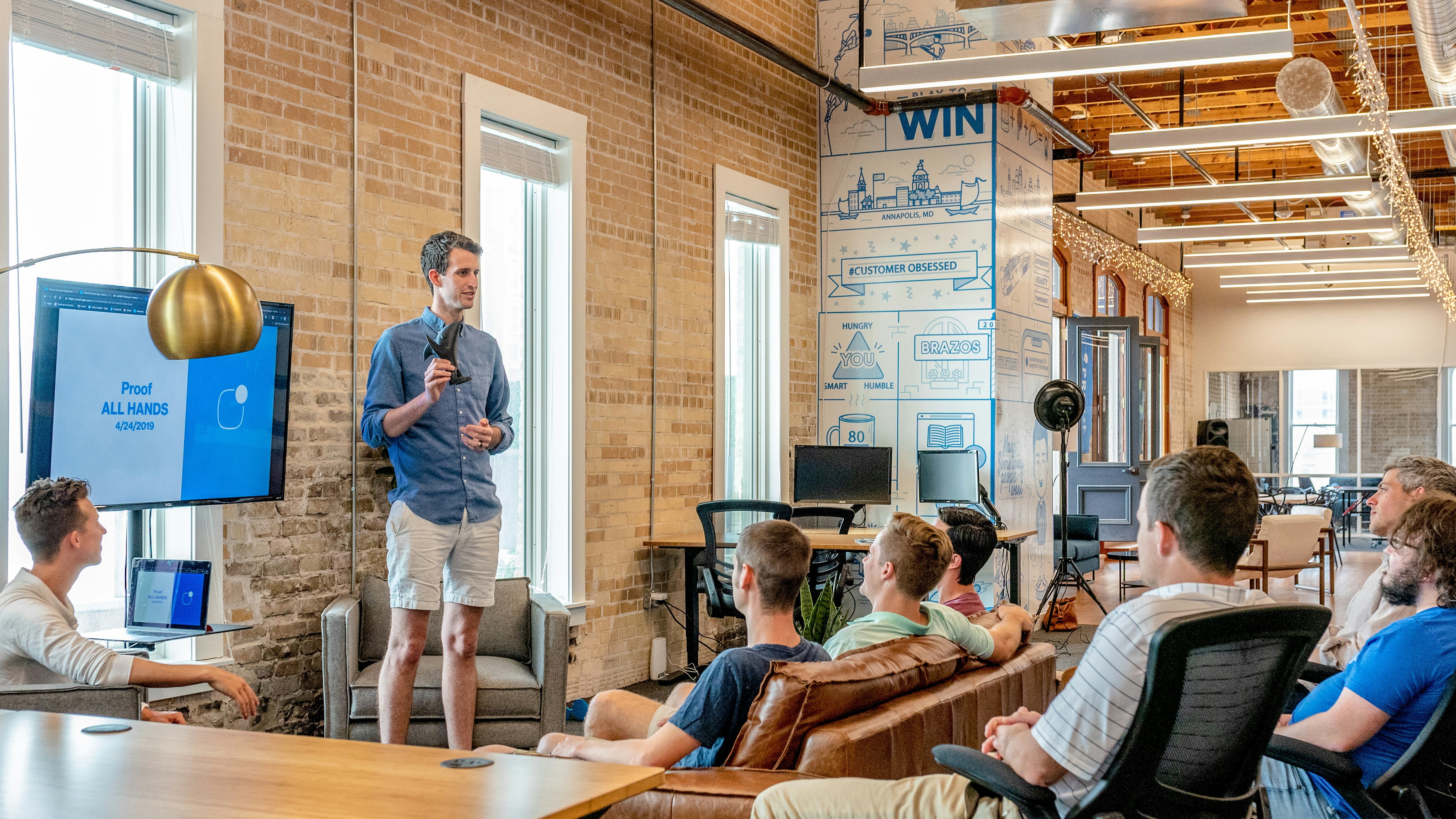The Architecture of Sustainable Scale

Discussion with Marcello Miradoli
With a career that’s taken him from founding startups to consulting at Kearney, leading teams in global media and consumer goods, and now advising Founders in a number of startups and fast-growing companies at FastTrack, Marcello Miradoli has seen the many stages of business growth up close. In this conversation, he shares down-to-earth strategies for moving beyond founder-led operations and building companies that can scale and endure. Drawing from his own leadership experience at the crossroads of growth and digital transformation, Marcello reflects on the moments when founders can start to hold their companies back, the systems that need to be in place to grow, how to hire leaders who can truly take ownership, and the mindset shifts that make long-term success possible.
Spotting the Bottleneck: When Founders Stall Growth
Founders are often the driving force behind early success—but as companies grow, that same intensity can start to hold them back. “You see it when the entrepreneur starts centralizing activities, not only decisions”, says Miradoli. When every task begins to loop back through the founder, the organization loses its speed and flexibility. Talented people may leave—or never join at all—because they don’t see space to lead.
This bottleneck doesn’t just affect how work gets done; it also shifts the company’s emotional tone. “There’s increased stubbornness, a reluctance to rely on data, and less sharing with the team”, Miradoli explains. That’s often the moment when a once-collaborative culture turns into something more top-down—a risky shift for any company trying to scale.
Breaking out of this pattern takes intention. Founders need to focus on building trust and creating space for others to take ownership. Miradoli underscores how important it is to lay the groundwork early: “Founders must start building a strong team around them and let go. It doesn’t happen overnight. It’s a process and one that requires mentors, advisors, and peers to help founders evolve from solo problem-solvers into leaders of systems”.
Designing the Operating System: Machines That Scale
If the founder is no longer the center of every decision, what keeps the business running? According to Miradoli, five core "machines" must be operationalized: demand generation and sales, product delivery and innovation, financial and performance management, customer success, and people and culture.
Each machine depends on clarity and discipline. The first is relentless solution validation, "A continuous feedback loop to refine product-market fit", he says. The second is what he calls the 80/20 principle: "Focus on what delivers the most impact. Everyone forgets this quickly".
But even the most focused strategy fails without data. Miradoli underlines the necessity of KPIs and performance metrics: "You need structured processes for gathering data and using it to make decisions. Not just gut feelings". As teams grow, accountability must evolve. "Mutual adaptation works for five-person teams. Beyond that, everyone must own specific outcomes and be recognized as owners by others".
%20Designing%20the%20operating%20machines%20that%20scale%20-%20new.png)
Hiring Builders, Not Heroes
Hiring strong leaders is critical, but not just any A-players. Founders need entrepreneurial executives with ownership mindsets and zero ego. "They must come with a track record of working in disruption", says Miradoli. "They should say: ‘Let me take care of it’, and mean it".
He warns against falling for charisma over substance. What matters most is motivation: "I always ask: What’s their motivational engine? That reveals whether they align with the company’s dream and values".
These leaders must thrive in ambiguity, communicate fluidly up and down, and be capable of building scalable systems, not just putting out fires. "It's a system thinking over hero mode", Miradoli says. "You're not hiring firefighters. You're hiring architects".
Codifying the Dream: Embedding Vision and Values
A founder’s vision often lives in their head, until it becomes a liability. To scale, that vision must be codified and lived across the organization. Miradoli uses the term "dream" over mission: "What will customers remember us for? What do we want to be remembered for?"
That dream must be co-created, not imposed. "It stems from the founder, but becomes a shared exercise", he says. From the dream come the values, behaviors, and strategic anchors that guide the company. It’s not enough to write it once. "You communicate, communicate, and then communicate again", he insists. The sequence of dreams, values, behaviors, and a "strategy on a page" must permeate daily decision-making. "It’s not a box you tick, it’s the founder’s core job".
%20Codifying%20the%20dream%20embedding%20vision%20and%20values%20-%20new.png)
Letting Go
Founders must move from chief doer to chief architect. "At some point, they need to stop being the product", says Miradoli. This mindset shift is essential for long-term value creation.
But the transition isn’t prescriptive. "It depends on the founder’s strengths, some are great at zero-to-one, but struggle beyond that". The key is self-awareness and support. The founder’s role, as the company matures, becomes one of culture, future-planning, and system design.
"You’re no longer building the company, you’re serving it", Miradoli notes. "That means switching from managing everything to becoming the ambassador of the vision and builder of culture". Miradoli would describe this as a switch from “CEO - Chief Everything Officer” to “CEO - Chief Evolution Officer”
Ensuring the System Doesn’t Revert
To prevent regression, where everything flows back to the founder, a strong team must be in place. That includes not only the internal leadership team, but also advisors and board members who provide external perspective. "You need people with seniority who look at your challenges without drama", says Miradoli.
The presence of a Co-Founder is always an extra help, alongside a “Founder Team”, that makes sure good leadership is maintained in the company. Finally, there is The Board and the Non Executive Directors. “You really need to have smart people sitting there, who can provide you crystal clear and independent points of view”.
Alongside them, a clear communication machine ensures alignment around the dream and values. With that north star, the team can operate with autonomy and resilience. "At the end of the day, it’s about building resilience", he says.
From Dependency to Durability: Making the Shift Work
Miradoli has seen both success and failure in this transition. The differentiator? Willingness to listen. "If the founder is listening, there is a path. If not, there isn’t", he states plainly. The same lesson applies in large organizations: transformation only happens when leadership steps back and removes ego.
Ultimately, sustainable growth is about moving from founder dependency to systems-led scaling. "It’s about building an organization that is capable of achievements beyond any individual’s contribution or imagination", says Miradoli. He comes back to the existence of an ego, it needs to be removed to actually have a growth equation.
Key Takeaways
Miradoli concludes that the most important thing to take into account to make a business successful is thinking of the right question: ”Stop asking "How do we manage without the founder?" and start asking "How do we build systems that make that question irrelevant?"”. In order to achieve this, he states the most important scaling strategies he has witnessed help a company grow.
- Build systems, not dependencies: Scaling organizations must be able to operate without the founder at the center.
- Culture and team are everything: Sustainable success comes from shared vision, values, and trusted leadership.
- Ego is the enemy: Listening, trusting others, and letting go are the most radical—and necessary—acts of leadership.
-p-1600.avif)










.avif)









-01.avif)


